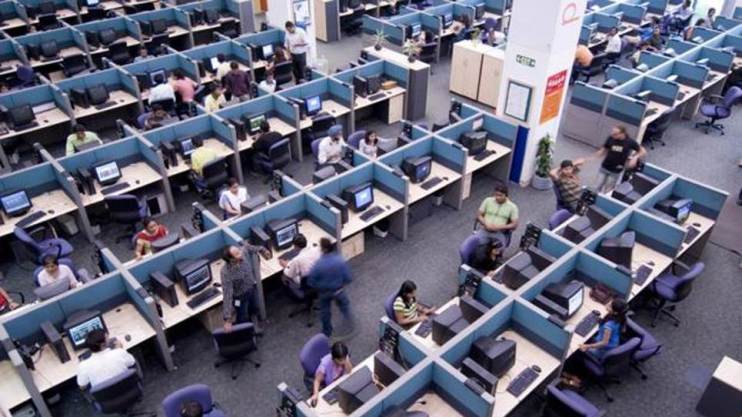

“The complacency that caused Japan and South Korea to lose their edge at the end of the last millennium is about to afflict India. This is not to denigrate the talent base in the Subcontinent – Indian digital expertise remains world-class. It is a question of attitude, an unwillingness to face the reality of the industrial shift that is coming.”
There are literally $100bn opportunities elsewhere in the digital space that India has the expertise and capacity to exploit – yet it shows no evidence that it is likely to take them. When I talk to Indian CEOs, they acknowledge the threats of digital transformation, and can see the opportunities for diversification. Yet they turn away from our conversations to focus on closing another legacy outsourcing deal – fiddling while Bangalore burns. (MINT)
You can see it in their faces, hear it in their voices. The Japanese and Koreans – on top of the world in the 1980s and 1990s – want the good old days back. When I meet Japanese and Korean companies these days I find their executives among the most attentive and determined of any in the world. Years of economic stagnation does that to you. Who doesn’t want to escape from a malaise? Willing alone won’t bring back the boom times – and I’m not yet ready to forecast a Northeast Asian renaissance. What I am ready to do is predict South Asian retrogression.
The complacency that caused Japan and South Korea to lose their edge at the end of the last millennium is about to afflict India. This is not to denigrate the talent base in the Subcontinent – Indian digital expertise remains world-class. It is a question of attitude, an unwillingness to face the reality of the industrial shift that is coming.
Much of India’s IT wealth comes from western outsourcing of IT services – managing new and old world corporate IT systems and mainframes upon which they run. Yet about a decade ago, the balance of computing power started to change to favor individual users.
With the advent of tablets, apps and cloud computing, users have direct access to better technology than their IT departments can provide them. They can download cheap, elegant, and powerful apps on their smartphones that make their corporate systems look primitive. These modern-day apps do not require internal teams of people doing software development and maintenance—they are user-customizable and can be built by anyone with basic programming skills. And with secure cloud computing, companies are doing away with servers, so corporate data centers are shrinking while Amazon, Google, and Microsoft’s data centers expand.
Gone are the multi-billion dollar outsourcing deals that the Indian outsourcers celebrated every month.
You can see the signs of stagnation in the layoffs that IT companies are making and in the slowdown in their hiring. You can see the agony in the faces of engineering graduates who are not getting job offers. Fortunately, the western contracts that are keeping the Indian IT sector alive will not disappear overnight. Company IT infrastructure takes decades to deconstruct and corporate IT strategy moves at the rate of molasses. There will be business for Indian IT for a few years more. But the eventual outcome is set, no matter how much they would like to wish it away: today’s IT industry will suffer a steep decline.
The same technology advances that have decimated the Indian advantage, however, offer a new opportunity that could allow the Indian information technology sector to reinvent itself, even gain the support of Americans who have been rallying against it: to help America modernize its aging infrastructure and enable it to bring manufacturing back from China. Technologies such as robotics, artificial intelligence and inexpensive and powerful sensors enable development of smart cities and automated factories and a wholesale upgrading of national infrastructure. Artificial Intelligence technologies can help analyses massive amounts data and improve decision making in every industry sector.
There are literally $100bn opportunities elsewhere in the digital space that India has the expertise and capacity to exploit, yet it shows no evidence that it is likely to take them. Instead, many Indian executives seem happy to plough on with more of the same, listening to the warnings without changing course. They claim to be using artificial intelligence tools and entering new markets—but these are just press releases, for marketing purposes. There is a fundamental lack of understanding of the new technologies and appreciation of the emerging market opportunities.
The dramatic changes to strategy needed to take advantage of the new opportunities and the large-scale retraining of the workforce are not happening. What really worries me is that India IT companies face becoming the Kodaks of tomorrow – anchored to an outdated business model that is destroyed by disruption.
What I have been teaching executives of companies in Japan and Korea as well as the US and Europe is that to survive the disruptions that advancing technologies are about to cause, and to take advantage of the new trillion-dollar opportunities, companies need to disrupt themselves. They need to do to themselves what startups from other industries are about to do to them: take the offensive with new technologies and business models and enter new markets. They need to challenge the status quo and question the past; behave like startups rather than lumbering giants.
When I talk to Indian CEOs, they acknowledge the threats of digital transformation, and can see the opportunities for diversification. Yet they turn away from our conversations to focus on closing another legacy outsourcing deal – fiddling while Bangalore burns.
(The author is a Distinguished Fellow at Carnegie Mellon University at Silicon Valley and author of The Driver in the Driverless Car: How Our Technology Choices Will Create the Future)




Be the first to comment